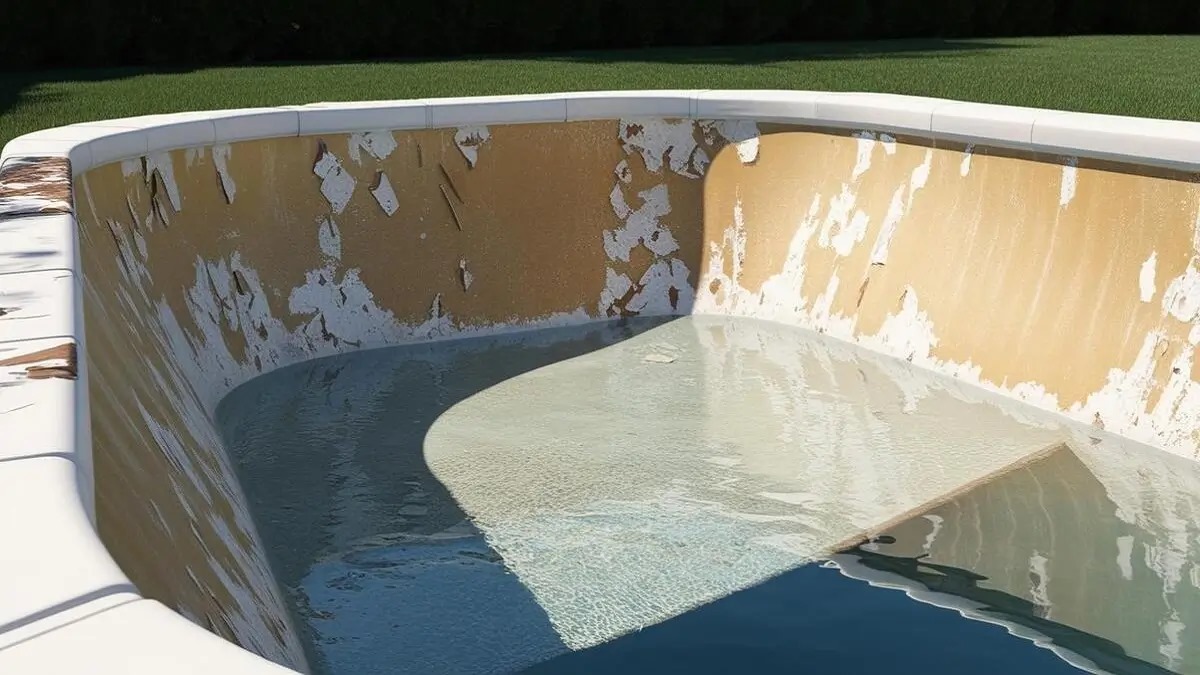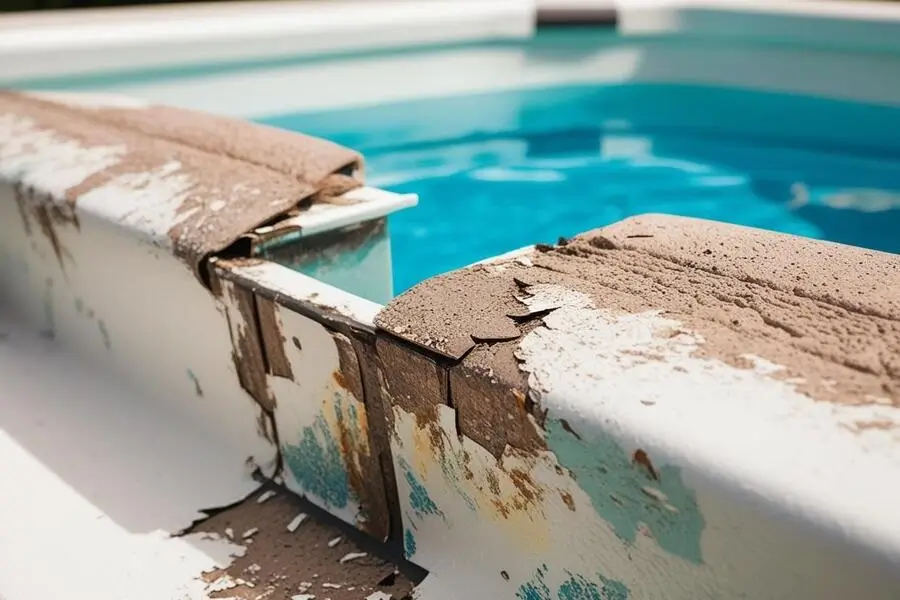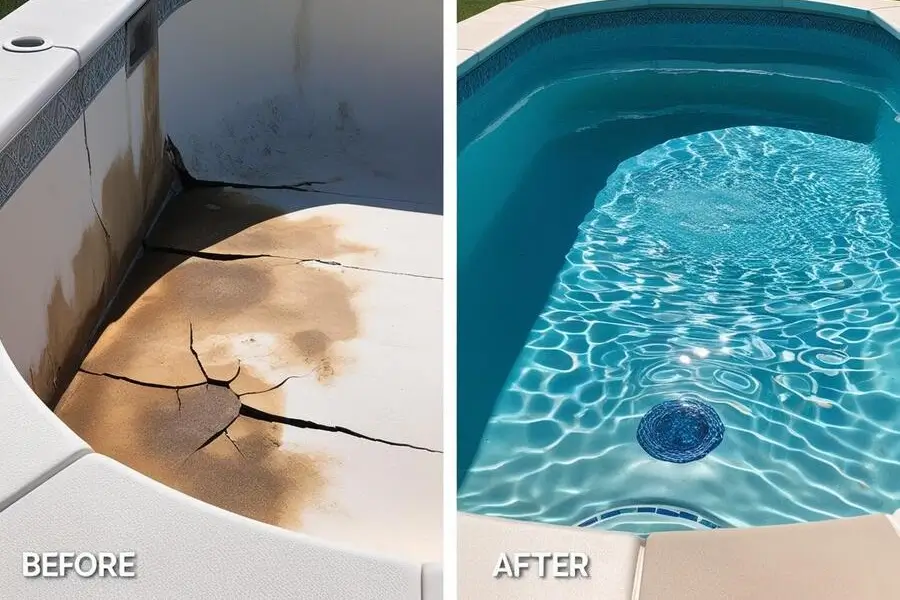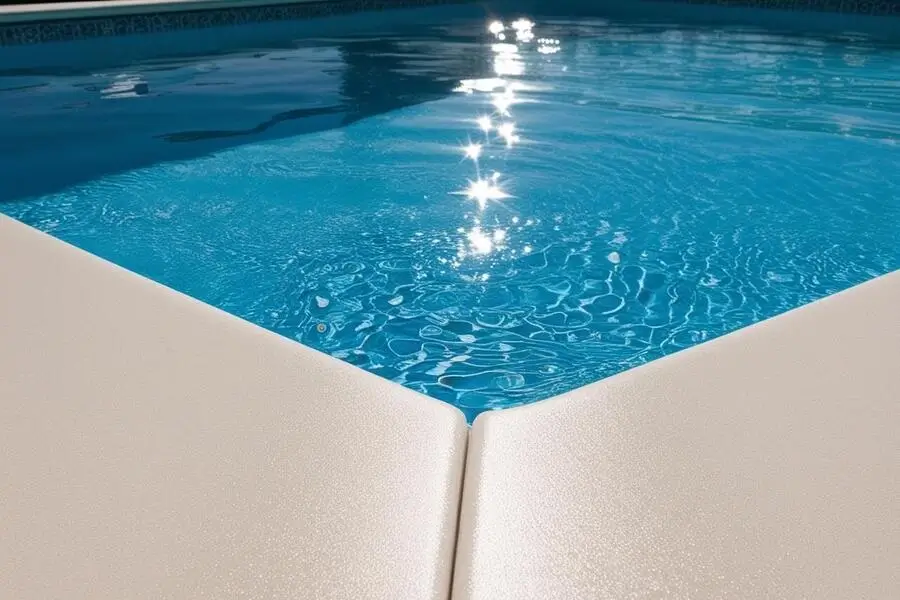
Do Fiberglass Pools Require Resurfacing? Here’s the Truth
Yes, fiberglass pools require resurfacing: we’ve talked so much about its pros and cons in the last article.
But something is missing, something that I’ve felt all along: does the fiberglass pools require resurfacing? Should it be resurfaced, how much does the resurfacing cost, and how can one resurface the fiberglass pool?
Here at the pools now, the fiberglass pool is made of high material. Still, yet after decades and use of unnatural chemicals, your pool needs to resurface, and here in this article, we will explain when your pools need to be resurfaced and what cost you have to pay.
Understanding fiberglass pool resurfacing
Fiberglass pools require resurfacing means giving new skin to a pool.
Resurfacing is the procedure of applying a layer of material over the fiberglass, which is reinforced using polyester or fiberglass composite moulding techniques.
Over time and due to the imbalance of chemical and UV radiation, your pool leads to cracks.
Resurfacing is a process in which we fix these issues by applying a new layer of gel onto the surface of your fiberglass pool.
Think of it like we repaint an old wall in the same ways we resurface your pool but using strong material like gel, which makes your pool brand new and stronger over the years.
Resurfacing is a process in which we give your pool a new paint and a new protective layer, which makes your pool stronger.
 Fiberglass Pools Require Resurfacing when cracks, stains, or rough patches appear. Restore its beauty and durability today!
Fiberglass Pools Require Resurfacing when cracks, stains, or rough patches appear. Restore its beauty and durability today!
4 Signs That Show Your Pool Needs Resurfacing
Here, I explain the signs.
- Roughness:
The unpaved place on the surface of the pool is called roughness, and this roughness can cause injury to your skin and also decrease your pool’s beauty. - Discolored grout
The change of colour of the material between the two panels of the fiberglass pool is called discoloured grout. The colour of the material turns yellow, brown, or even black.
This decreases the beauty of the pool and makes the pool dirty. - Cracked walls:
Cracked walls mean a split of the fiberglass layer; these splits can be smaller or deeper .Smaller cracks can affect the protective layer, but the bigger cracks can cause leakages.
If you notice this issue, then immediately resolve the issue by resurfacing the pool mean applying a new protective layer of a fiberglass pool. - Stains and discoloration
The unwanted colour or dark spot on the surface of the fiberglass pool is called stain or discolouration.
These dark spots can appear as rust-like marks or cloudy patches on the surface, which decrease the beauty of your pool and also make the pool dirty.
7 Process of Resurfacing of Fiberglass Pool
Here, we have explained these processes to you.
1. Drain the pool
Every work has a starting point, and similarly, the starting point of fiberglass pool resurfacing is draining water.
Draining water means getting all the water from the pool to the outside by using a pump and leaving the pool empty for a few hours.
This will help in drawing the pool, and also we know the effective part of the pool surface where we have to work harder and harder for resurfacing.
2. Sand and Clean the Surface
Sanding and cleaning the surface is a very important step in the resurfacing process.
In it, we use sand or sandpaper to clean the surface to remove old coating stains, black spots and effective areas.
After that, we clean the whole surface to remove dust particles, dribbles, and contaminants to ensure the surface is ready for a new coating.
All the process is done to make sure that the new coating gel should adhere to the surface.
 Fiberglass Pools Require Resurfacing to prevent small cracks from becoming bigger issues. Timely repairs keep your pool in top shape!
Fiberglass Pools Require Resurfacing to prevent small cracks from becoming bigger issues. Timely repairs keep your pool in top shape!
3. Repair Any Damage
Repairing any damage is a very important step before resurfacing the pool. Over time, the pool surface can be affected, or damaged areas are created due to the use of chemical structural stress and regular use improper cleaning and caring for the pool, the stain or damaged area appears.
In this step, we apply sand or sandpaper as required, and the sand removes the weak material from the pool surface.
Then, this weak area is filled with a special type of resin fiberglass to make the surface stronger over the years.
After filling the damaged area, we left the pool for some hours and then applied the sand again to ensure the filling material had a stronger bond with the surface.
4. Apply a Primer or Bonding Coat
After repairing and cleaning the damaged area of the pool, the fiberglass pool surface looks good to have a new coating layer.
For stronger adhesiveness, we apply a primer coat of gel by using a spray gun or paint roller and make sure that you cover the entire area.
This gel is composed of polyester resin pigments, filler, and additives.
This gel provides a way for the main gel or layer to connect with the fiberglass material and make a strong layer that can protect the fiberglass pool from leaking, staining, and other factors.
This step is the important step in the process of fiberglass pool resurfacing.
5. Apply a New Gel Coat or Pool Finish
Now, the time comes to give your pool a new tech in the form of a gel coat or a new layer.
That’s the very crux of the entire procedure, as well as giving you the answer to whether the fiberglass pools require resurfacing.
It is in mixing the coating gel made from polyester resin or vinyl ester resin with a catalyst, MEKH, methyl ethyl ketone peroxide.
This mixture is then sprayed onto the fiberglass material utilizing the spray gun or paint roller. In most cases, people prefer the spray gun because it is easy to use and covers a bigger area in minutes.
Then apply two or three layers of gel coat on the surface for perfect results and maintain the thickness between 20 to 25 miles. Too thick can cause cracking, and too thin may wear out quickly.
After applying the new gel coat, leave the pool empty for 24 to 48 according to the local temperature and other factors and make sure no human tech touches the surface or fills the water into the pool.
 Fiberglass Pools Require Resurfacing for a smooth, polished surface that enhances durability and aesthetics.
Fiberglass Pools Require Resurfacing for a smooth, polished surface that enhances durability and aesthetics.
6. Sand and Polish the Surface
After applying the new coat and leaving the pool for 48 hours for drawing, now your pool is ready for polishing to give the new skin to your pool.
We apply sand or sandpaper for cleaning and ensuring that the new gel bonds well with the fiberglass. We apply good polish to give a good colour to your pool.
This is the final tech to your pool, and this step is also called the test step of fiberglass pool resurfacing.
7. Refill the Pool and Balance Chemicals
After doing all the process, you should refill the pool with clean and clear water, but remember to fill the pool slowly to prevent structural stress. Also, adjust the water chemistry pH from 7.2 to 7.6 and alkalinity (80_120ppm) and chlorine level to ensure water clarity and surface protection.
Required material
- Fiberglass resin
- Gelcoat
- Catalyst (MAKE)
- Fiberglass mat or cloth
- Pool paint
- Sandpaper or acetone
- Epoxy or marine-grade primer
- Spray gun or paint roller
- Ph neutral cleaner
How much it cost to resurface a fiberglass pool
The cost to resurface fiberglass pools primarily rests somewhere under $7000-$8000. Chances are it’s out of date. Other factors affecting this average include pool size, type of finish, local pricing, etc.
The money depends on your wishes- If you decide to go ahead with plastic thermoplastic instead of pool paint, it will cost between 20000$ and 26000$; pool paint is much cheaper. Therefore, it would cost between 2500$- 3000$.
Conclusion
Fibreglass pools are durable, but certainly, due to chemical imbalance induced by ultraviolet radiation, they are bound to resurface after a few years of use; that is why the resurfacing must go through the steps or processes of draining the pool, sanding and cleaning the surface, repairing any damage, applying a new gel coat, refilling the pool, and balancing chemicals. Regular cleaning does delay the resurfacing needs of your pool.
fiberglass pools require resurfacing costs from around $7000-$8000 but usually depends upon such factors as the size of the pool and the rates available locally.
So, for the symptoms as follows- roughness, discoloured grout, cracked walls, and discoloured colour, your pool needs to be resurfaced.








I’m really inspired together with your writing talents as smartly as with the structure on your blog. Is this a paid subject or did you customize it your self? Anyway stay up the nice quality writing, it is uncommon to peer a nice weblog like this one nowadays!
buy antibiotics from india Over the counter antibiotics for infection or buy antibiotics online
https://maps.google.pn/url?q=https://biotpharm.com Over the counter antibiotics pills
=tadalafil without a doctor’s prescription]buy antibiotics from india antibiotic without presription and antibiotic without presription Over the counter antibiotics for infection